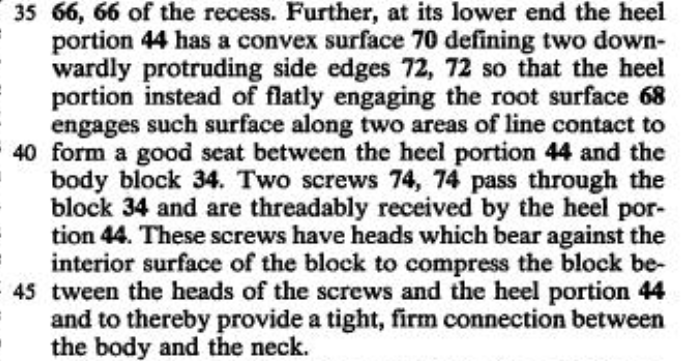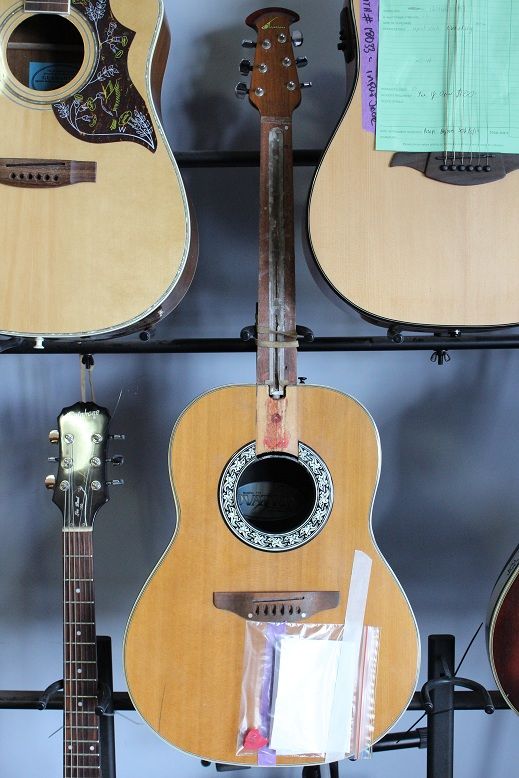
 |
|
#31
|
|||
|
|||
|
Quote:
Just saying there will be a difference is not quantifiable. Have you measured the difference between how much the top rises when under tension vs. when it's not? |
|
#32
|
|||
|
|||
|
Quote:
Quote:
I agree. I can look at the height of the saddle above the bridge and the height of the strings above the 12th fret and see immediately whether the neck angle (top belly/collapse) is affecting the action. |
|
#33
|
|||
|
|||
|
Quote:
So most will resort to anything that is possible to keep the guitar going, nothing wrong with that, we all have different approaches Steve
__________________
Cole Clark Fat Lady Gretsch Electromatic Martin CEO7 Maton Messiah Taylor 814CE |
|
#34
|
|||
|
|||
|
Quote:
Why would you consider lowering the saddle a crutch? Adjusting saddle height within reasonable limits is standard practice for adjusting action. I've never tried to quantify it, but I know the difference is enough to make an 18" straightedge unreliable for that use. |
|
#35
|
|||
|
|||
|
Quote:
The foreign-made Ovations have always had glue-on necks, but with the right technique to soften the epoxy, these can be converted to a bolt-on neck. Here's a thread on the OFC where a member did just that. (See: Celebrity Deluxe CC247 Neck Reset) |
|
#36
|
|||
|
|||
|
Quote:
  I should have been more clear. Lowering the saddle within reasonable limits to adjust action is fine. But, when you lower the saddle excessively in lieu of a neck reset, it's a crutch. I haven't had that experience. The neck is straight except for a slight amount of relief, right? Proper relief is .010" to .020". So, for the sake of discussion, let's split the difference at .015". (1/64") From the mid-point of the neck with that kind of relief, the straight edge will only be .030" or a 1/32" higher at the bridge than if we'd measured from the 1st fret. I know that's correct because I just did a simple CAD drawing of a neck with a 25.5" scale and measured it. 1/32" of an inch is not a significant amount when it comes to determining whether the neck needs a reset. So, it doesn't really matter whether you're measuring from the 5th or 6th fret or from the 1st fret when you're checking the neck angle. |
|
#37
|
|||
|
|||
|
Quote:
Quote:
Typical specs are 3/8" bridge thickness, 1/8" saddle above bridge, 1/2" height above top. You can lower the action by lowering the saddle about 1/16" before a reset is in order, that drops the height of the strings above the top to 7/16". And you are saying 1/32" isn't significant in determining the need for a reset?
__________________
Rodger Knox, PE 1917 Martin 0-28 1956 Gibson J-50 et al |
|
#38
|
|||
|
|||
|
On the guitars I build I expect the change due to top rise and neck relief to be about 1-2/64 under tension. That's a good place to start and as such I make sure the straight edge test takes that in to account. Obviously an over built guitar will hardly budge but aiming for a straight edge, strings off, to be about 1/32 over the saddle is about right in any case I think.
It's a general rule of thumb that has worked well for me fwiw. |
|
#39
|
|||
|
|||
|
FWIW, Grit Laskin told me that he builds his guitars so the top rises 1/16" under tension.
|
|
#40
|
|||
|
|||
|
Quote:
A kaman bar is nothing more than an aluminium insert/casting, it does not mean the neck is bolt on. The issue with doing neck resets on ovations is 90 plus percent of them are epoxied on, not the easiest of glues to get apart, hence my earlier comment, pretty well impossible for most and extremeley difficult for some Steve
__________________
Cole Clark Fat Lady Gretsch Electromatic Martin CEO7 Maton Messiah Taylor 814CE |
|
#41
|
|||
|
|||
|
Quote:
Let's do the math using your numbers. 1/64" is .0156". 1/128" is .0078", 1/256" is .0039", 1/512" is .00195". FWIW, 20# printer paper is .0035" thick. So, with a neck relief of .002", (1/512") the rise of the straight edge at the bridge when measured from the 6th fret will be .004", or just over 1/256". I don't have a ruler that measures in increments of less than 1/64", but are you saying that .004", or the thickness of a sheet of paper will introduce such a large error that it negates measuring from the middle of the neck? Out of curiosity, how do you measure 1/256" with a ruler? Even with a neck relief of .007" which you say is a large amount, the rise of the ruler at the bridge will be .014, or just under 1/64". With a neck relief of .004", which is about halfway between what you say is a slight and large amount, the rise of the straight edge will still be only .008", or just over 1/128". I guess if you're shooting for 100% absolute precision, this would demand measuring from the 1st fret. But, I can live with an error of 1/256" to 1/512". Last edited by DanSavage; 06-02-2016 at 07:33 PM. |
|
#42
|
|||
|
|||
|
Quote:
As my link to Ken's Celebrity neck reset shows, the Tg of the glue used for Ovation necks is lower than the temperature of boiling point of water. The trick is knowing how to apply the heat in such a way that it will soften the epoxy. Ken's thread shows a really good way to do so. Here's the 1977 Patent drawings for the Kaman Bar. (See: Ovation "Kaman Bar" Patent (1977)) Here's the parts of the description that describes how the neck attaches to the body. Between the drawings and description, this sounds like a bolt-on neck, to me.  
|
|
#43
|
|||
|
|||
|
That pretty much agrees with what I've seen. I try to make sure the straight edge is about 1/16" above the top of the bridge and once I put the strings on it, the straight edge is just kissing the bridge.
|
|
#44
|
|||
|
|||
|
Quote:
But yes, in agreement with Dan, using a straightedge on a neck with about .004" of relief gives you a whopping angle error of something like .06 degrees. But then why the need as some point out for such a long straightedge? From the 8th fret or so to the fretboard end should be relatively straight anyway, barring any structural problems. Why take into account where the relief is, since we know, unless it was built into the fretboard to begin with, that the relief is induced by the string tension and adjusted by the trussrod? But really, are we so lazy that we can't straighten out the neck before checking neck pitch (which is usually the way we do it when checking the neck angle in the first place when attaching the neck)? Can obviously be done with string tension, and eliminates any error, however microscopic. Even just sighting down from the headstock area, looking from the 8th fret out to the bridge, one can quickly determine if the neck is a candidate for a reset. Likewise, can mere mortals tell the difference in sound between a guitar whose string height is 7/32" and 1/2"? And attribute that change to just the string height? Quote:
|
|
#45
|
|||
|
|||
|
Quote:
Thats also a new one on me, epoxy that releases its strength at a temperature less than boiling point of water, wow, never seen that yet, epoxy is a chemically hardened product, it not a product that sets from evaporation or exposure to air. I get my information from doing the job. Steve 
__________________
Cole Clark Fat Lady Gretsch Electromatic Martin CEO7 Maton Messiah Taylor 814CE Last edited by mirwa; 06-02-2016 at 08:35 PM. |